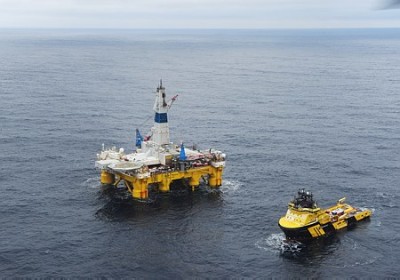Oil companies both inside and outside Norway welcomed the government’s announcement this week that new oil fields would be opened in the Barents Sea, but several Members of Parliament are warning that the government has “oversold” them. Some of the fields may not be opened after all, as political debate continues over oil industry activity in the Arctic.

“Never before has a licensing round been launched on the condition that the Parliament must approve it,” Trine Skei Grande, the leader of the Liberal Party, told newspaper Dagens Næringsliv (DN) on Wednesday. “If the oil industry thinks this is clear sailing, it can be very disappointed. This has been oversold.”
Grande’s party is one of two so-called “support parties” in Parliament for Norway’s conservative minority government, which announced plans Tuesday to move forward with the controversial 23rd offshore oil field licensing round. It includes brand new territory in the eastern and northern Barents Sea, and the controversy stems from the location of some of the areas targeted for oil exploration and production.
Both the Liberals and the Christian Democrats party, along with some opposition parties in Parliament, object mightily to oil industry activity too close to the polar ice. Government officials, citing new satellite data, claimed that melting ice allowed them to move the ice border (or so-called “ice edge”) 60-70 kilometers to the north, thus accommodating some of the new sought-after fields believed to hold large quantities of oil and gas. Even though oil companies currently are struggling with relatively low prices for the oil and gas they sell, most are keen to gain access to potentially abundant new resources.
Grande and Christian Democrats leader Knut Arild Hareide stressed that they have an agreement with the government that the actual setting of the ice borders must be decided in Parliament. They argue that Oil Minister Tord Lien’s opening of the new Arctic fields thus carries a huge condition: MPs may not agree with his government’s proposed borders, and exclude the fields from exploration and development.
“This is a matter for Parliament,” Hareide told reporters after both he and Grande were surprised by Lien’s announcement on Tuesday. Lien, while bullish on maintaining oil industry activity in Norway, conceded in a press release that the current “framework” for safeguarding the Arctic environment “ensures that no petroleum activities can start along the ice edge in this parliamentary term.”
Determining where the ice edge actually lies will now be debated, based on professional if sometime contradictory information from the Polar Institute and other experts. The Labour Party is likely to determine the outcome, according to political commentators. The current conservative government has basically followed the former Labour-led government’s Arctic oil policies, while new Labour leader Jonas Gahr Støre has since voiced caution and even, last summer, stated that perhaps much of Norway’s offshore oil should be left to lie under the seabed.
In the end, though, most expect Labour will go along with the conservative government’s eagerness to put a higher priority on job creation and economic development than on environmental protection and climate concerns.
newsinenglish.no/Nina Berglund

